What types of traffic calming devices are available for my street?
The City has developed a software application that identifies and describes traffic calming devices that may be appropriate for a street. Additional information is available on request. General information on the general Norwalk Traffic Calming plan can be found HERE
2020 Parking Plan
2020 Parking Plan
The 2020 Parking Plan outlines current usage and presents recommendations for future parking development throughout the city.View 2020 Parking Plan Document »
Encouraging More Sustainable Cities with Mobility Hubs and Car-free Zones
The modern city has been developed over the last century with the car in mind, prioritizing automobile transportation over other modes of transit. The rise in the past decades of individual car traffic has created a strain on the availability of on street parking resources to balance different uses including parking, biking, pedestrian access, rideshare companies, buses, curbside pick up and deliveries, and the environment. To reduce traffic congestion, air pollution, enhance economic development, create a greener, more liveable city for visitors, workers and residents, cities are promoting options to encourage other modes of transportation and pedestrian traffic. Two of these are mobility hubs and car-free zones, which we’ll take a look at below.
Mobility Hubs
There are more and more options to get around a city these days. In the last decade, cities have seen an increase in things like shared bikes and scooters, as well as on-demand rides. As cities try to encourage a variety of options for people to get around the city, they realize that one of the biggest challenges to encouraging public transit is the so-called “first and last miles” – getting people to and from public transit to their home and their final destination. Mobility hubs help solve this. They are places where different modes of transportation (from regional and local public transit to walking, biking, scooters) come together, ideally also located near places to work, live, shop and play. This may include bike racks, bike and scooter share stations, designated ride hailing drop-off zones, parking spaces reserved for ride sharing vehicles, high-frequency local shuttle services, and taxi waiting areas located near train and bus stations or metro stops. Mobility hubs give city travelers who do not live or work near public transit stations access to a variety of options for transportation and a number of destinations without having to drive themselves . With different transportation options, cities are starting to plan to accommodate them, including improving safety and accessibility in city streets.Car-free Zones
Another idea to reduce the number of cars in a city is to open car-free zones by closing streets to vehicle traffic, creating pedestrian-only areas. This can be done during certain hours of the day, days of the week or permanently. Car-free zones create “open space” for people to walk and bike safely and easily in areas that have amenities such as shops, restaurants and entertainment. In addition to reducing congestion, air pollution and carbon emissions, car free zones can be a powerful economic engine encompassing retailers and restaurants and generating income for businesses and cities. These areas are key to what urban developers call placemaking, welcoming spaces for the community to gather, for everyone to experience and enjoy. An added benefit is that banning cars from certain areas is reversible. City policy can be changed relatively easier than building or widened roads to reduce congestion or adding bike and pedestrian lanes to existing streets. Denver has had the 16th Street Mall, a 1.2-mile tree-lined promenade in the downtown’s main street, for over 35 years. More recently, more cities in the U.S. and around the world are closing streets and areas to cars. In January 2020, San Francisco converted more than two miles of downtown Market Street, banning private cars and limiting traffic to street cars, buses, cyclists, and pedestrians. In the fall of 2019, New York City began a pilot program, banning all cars on one mile of 14th street, allowing only buses and some trucks and emergency vehicles. In Europe, cities such as Madrid, Barcelona and Oslo have car-free zones in downtown areas.Mobility Hubs and Car-Free Zones in Norwalk
In Norwalk most recently, responding to the city and state reopening plans during COVID-19, the City collaborated with the Norwalk Parking Authority to take 28 parking spaces out of service on Washington Street. This allowed businesses there to expand outdoor dining locations and curbside pick up along with a pedestrian walkway. The area was enhanced via the Arts Commission and local artists by creating artistic collages using the concrete barriers separating the area from the street. While this may be temporary due to the pandemic, the city can use this to assess the success of this kind of program. Norwalk is also looking at the effects on commuting habits due to COVID and how that may shape transportation options in the future. The East Norwalk Transit Oriented Development Plan envisions mobility hubs that improve transit accessibility, expanding pedestrian and bike networks as well as developing more pedestrian-friendly areas. The Bike Walk Commission is looking into increasing and enhancing biking facilities around Norwalk, providing much needed safe connections and encouraging this alternate mode of transportation.Why Managed and Paid Parking Matters
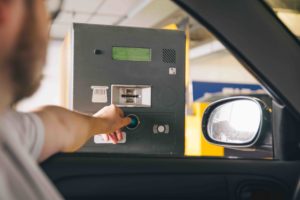 Parking: many consider it a blessing and a curse. When in a city, it’s a joy to find parking, but very frustrating when you can’t. If you live in the suburbs or rural areas, you may not even think about parking in the same way, as parking spots are often numerous and free. In most cities downtown areas, paying for parking is the norm, not the exception. Although people may gripe about this, paying for parking can provide numerous benefits to city residents, businesses and visitors alike, including increased turnover and more availability of parking spaces, reduced traffic congestion, parking facility cost savings and resources for economic development.
Parking: many consider it a blessing and a curse. When in a city, it’s a joy to find parking, but very frustrating when you can’t. If you live in the suburbs or rural areas, you may not even think about parking in the same way, as parking spots are often numerous and free. In most cities downtown areas, paying for parking is the norm, not the exception. Although people may gripe about this, paying for parking can provide numerous benefits to city residents, businesses and visitors alike, including increased turnover and more availability of parking spaces, reduced traffic congestion, parking facility cost savings and resources for economic development.
The Cost of Free Parking
It’s typical for people to think that parking should be free and publicly available. However, not everyone needs parking, and in urban areas, there are only so many available parking spots. Whether you have to pay parking fees or not, people still bear the costs of parking - cost of pavement, street cleaning, facility maintenance, security services, and other services. These come directly out of tax dollars, and are passed on to residents and consumers in other ways such as through higher rents and prices that city businesses charge for products and services . Therefore, parking is not really free. There is a choice, however, between paying directly or indirectly for parking facilities. Paying directly for parking is actually more equitable because with free parking, people who don’t use public parking spots are paying for other peoples' parking.Benefits of Paid Parking to Local Commerce
When there isn’t paid parking and management, convenient parking spaces tend to be in high demand. Without having to pay a meter or to use a facility, people tend to stay in spots longer - sometimes all day and many times longer. This leads to other would-be parkers spending more time driving around, wasting time looking for convenient, available spots close to their destination, or worse - leaving in frustration. Paid parking encourages longer-term parkers to use less convenient, but less expensive spaces. While businesses in urban areas tend to be worried about paid parking, it actually increases turnover and ease for customers to find a parking spot nearby and closer to their business. Plus, data shows that customers will pay for convenient, easy to find parking spaces closer to their destination.Efficient and Environmentally Sound
Having free parking not only negatively affects local business, but also provides an incentive to rely more on cars, crowding city streets and making it harder to drive and park. As mentioned above, free parking increases the time people drive around looking for parking. All of this increases traffic congestion and carbon emissions. When people have to pay for parking it encourages them to use public transportation and alternative modes of transportation to urban centers, including on-demand transit, microtransit and biking. Recent studies have found that in dense cities, public transportation use is significantly higher in areas where parking is more expensive.Paid Parking and Economic Development
Parking fees can be used to help finance local governments to make improvements for residents and visitors, and to enhance economic development investments such as public private development, transportation and mobility alternatives, connectivity, as well as repurposing parking facilities through community development partnerships. Roads and parking facilities are valuable municipal assets. Building and maintaining them can be costly. Parking fees allow governments to recover these costs from those who use them, including non-residents. Cities can also use revenues from parking fees to finance neighborhood improvements such as more street and sidewalk cleaning, increased security, public space and placemaking amenities such as landscaping, benches, fountains and walkways, or community-wide events, and marketing for commercial districts. Monies can also be used to make improvements to alternative modes of transportation that will help reduce parking and traffic problems such as wider sidewalks, improved and safe walkability, biking resources and on demand transportation including microtransit.Paid Parking in Norwalk
In Norwalk, paid parking is the norm in the urban South Norwalk, West Avenue and Wall Street areas. Parking pricing in Norwalk is a part of an integrated parking management program overseen by the Norwalk Parking Authority. Use of technology that calculates congestion and occupancy rates allows the City to vary parking pricing for less trafficked hours and spots as well as to create and manage flexible parking spaces to accommodate short term parking needs such as curbside pickups and deliveries. Many of the complaints about parking stem from inconvenient payment methods. The Norwalk Parking Authority has been on the cutting edge of payment technology, having offered a pay-by-phone option for several years, and most recently, text to pay and online parking reservation options. The maintenance, security, enforcement and improvement of parking facilities and on-street parking in Norwalk is not subsidized by the taxpayer, but through parking fees by the user, with over 70% from out of town, making parking in the city more efficient and equitable. It has also generated revenues that have been used to benefit residents, businesses and visitors such as public art, and the promotion of local businesses via a parking validation program and Norwalk Now, and citywide investments in parking facility improvements and enhancements.Top Tips for Bike and Pedestrian Safety
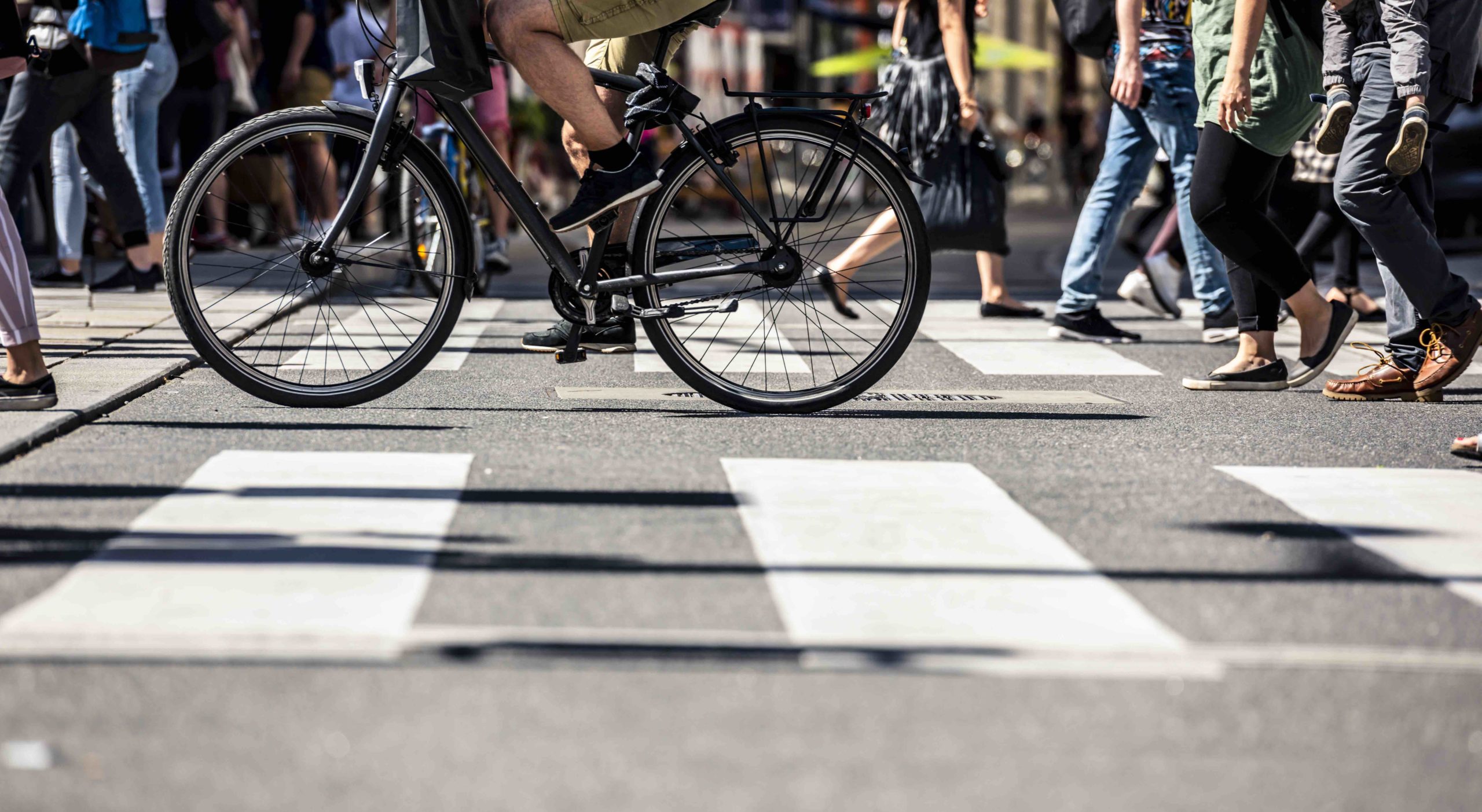 Getting around any city like Norwalk by bicycle or walking can be challenging as the vast majority of people travel by car. In 2017, the Norwalk Bike/Walk Commission was established to support bicycling and walking as safe, accessible and sustainable forms of transportation and recreation. Norwalk’s 10-year Citywide Plan envisions making city streets safer by implementing policies that provide safe transit for all moving vehicles as well as pedestrians (Read more here), such as investment in new bicycle and walking facilities distributed equally throughout the city. As Norwalkers gear up for more biking and walking, the Bike/Walk Commission shares some tips for safely getting around the city on a bike or on foot.
Getting around any city like Norwalk by bicycle or walking can be challenging as the vast majority of people travel by car. In 2017, the Norwalk Bike/Walk Commission was established to support bicycling and walking as safe, accessible and sustainable forms of transportation and recreation. Norwalk’s 10-year Citywide Plan envisions making city streets safer by implementing policies that provide safe transit for all moving vehicles as well as pedestrians (Read more here), such as investment in new bicycle and walking facilities distributed equally throughout the city. As Norwalkers gear up for more biking and walking, the Bike/Walk Commission shares some tips for safely getting around the city on a bike or on foot.
Safe Bicycling Guidelines
When biking around town, it’s important to remember that bicycles are vehicles. When on a bike, you need to follow the rules of the road, just like a car. This means riding with traffic, always stopping at red lights, and making a full stop at stop signs. When biking with another person, you can ride two abreast (no more than that), but need to ride single file when there is car traffic coming from behind you in order to let cars pass. Here are some tips for staying safe on your bike:- Wear a helmet that fits properly (this is mandatory for those under 15-years old, including infants and toddlers in a bicycle seat)
- Adjust your bicycle to fit you:
- When standing over your bicycle, there should be 1- to 2-inches between you and the top bar if using a road bike, and 3- to 4-inches if using a mountain bike
- The seat should be level from front to back
- The seat height should allow a slight bend at the knee when the leg is fully extended
- The handlebar height should be at the same level with the seat
- Make sure your tires are properly inflated and brakes work
- Ride with at least one hand on the handlebars. Don’t hold items- carry them in a bicycle carrier or backpack.
- Be on the lookout for hazards that can cause a crash such as potholes, broken glass, gravel, puddles, leaves, and dogs. If you are riding with friends and you are in the lead, yell out and point to the hazard to alert the riders behind you.
- Be visible by wearing bright clothing and using lights and reflectors at dusk and at night
Walking Safety Tips
In 2007, the Connecticut legislature stiffened the law regarding pedestrians and crosswalks requiring that drivers grant the right-of-way when a pedestrian has stepped “off the curb or into the crosswalk”. In other words, drivers must yield, slow, or stop when pedestrians are in crosswalks. When there are no crosswalks, drivers have the right of way. Despite the crosswalk law, and since there are many places around town with no crosswalks, you can’t be too cautious or careful when walking. Here are some guidelines to keep you safe when walking in town:- Use a sidewalk- if there is one. When on a sidewalk, you can walk with or against traffic
- Walk single file against the traffic If there is no sidewalk
- Cross streets at crosswalks, and when the signal gives you the “green light”
- Watch for cars and bicycles entering or exiting driveways or backing up in parking lots
- Be visible. Just like on a bike, it’s important that drivers can see you. Wear bright colored clothes and consider wearing a safety vest and a light at dusk or when it’s dark
- Stay tuned in to the environment around you. Don’t wear ear buds or text while walking
- Practice “defensive” walking by assuming it’s your job to stay safe. For example, establish eye contact with drivers
Making Norwalk Streets Safer with Vision Zero and Complete Streets
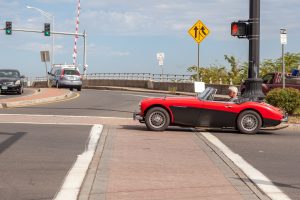 Accommodating all moving vehicles and pedestrians on a town or city’s streets so they can all transit safely can be difficult, but it’s necessary as more and more people use alternative methods of transportation such as biking or public transportation. Norwalk’s 10-year Citywide Plan (Plan of Conservation and Development) envisions adopting Complete Streets and Vision Zero Initiatives to make its streets safer. Vision Zero is a different way of approaching traffic planning and policies with the goal of improving road safety so there are no deaths or serious injuries. Complete Streets is an approach to city street design and policies that promotes safe, convenient, and equitable mobility and forms of transportation for everyone, especially children, people with disabilities, and older adults. Below we take a closer look at these two initiatives.
Accommodating all moving vehicles and pedestrians on a town or city’s streets so they can all transit safely can be difficult, but it’s necessary as more and more people use alternative methods of transportation such as biking or public transportation. Norwalk’s 10-year Citywide Plan (Plan of Conservation and Development) envisions adopting Complete Streets and Vision Zero Initiatives to make its streets safer. Vision Zero is a different way of approaching traffic planning and policies with the goal of improving road safety so there are no deaths or serious injuries. Complete Streets is an approach to city street design and policies that promotes safe, convenient, and equitable mobility and forms of transportation for everyone, especially children, people with disabilities, and older adults. Below we take a closer look at these two initiatives.
What is Vision Zero?
The Vision Zero movement considers traffic safety as a public health issue, believing that traffic accidents, deaths, and injuries can be prevented through design, engineering, policies, enforcement, community engagement, and education. Vision Zero plans bring together a wide variety of stakeholders, with collaboration among local traffic planners and engineers, policymakers, and public health professionals to work on the many factors that go into making roadways safe including roadway design, speeds, behaviors, technology, and policies. The movement, which began in Sweden in 1997, has grown across Europe and in the United States. Cities that have implemented Vision Zero in the U.S. include New York City, Boston, Charlotte, North Carolina, Denver Colorado, Tempe Arizona, and Bellevue, Washington, among others.What is Complete Streets?
Complete Streets complements Vision Zero with the goal of having streets that are safe for everyone, from motorists to public transportation riders, bicyclists to pedestrians. Some ways to do this is to integrate better roadway design with safe access in mind for all different types of mobility through the city when improving existing streets and designing new ones. What this looks like depends on the city or town, but could include adding sidewalks, bike lanes, special bus lanes, safe public transportation stops, clearly marked and accessible crosswalks, median islands and pedestrian-designated signals.Vision Zero & Complete Streets for Norwalk
The new Norwalk 10-year Citywide Plan contains details about adopting both Vision Zero and Complete Streets initiatives. Vision Zero will be used as an added safety layer on top of Complete Streets to establish equitable mobility for all kinds of people throughout all city operated roadways. The initiatives will include community engagement to identify concerns and discuss options before changes are made. Key city departments involved will include, the Mayor’s office, Common Council, Transportation, Mobility, and Parking, Planning and Zoning, Public Health, the Bike-Walk Commission, as well as the Fire and Police Departments. Some of the plans to reach the Vision Zero and Complete Streets goals include developing long-range transportation plans with an eye to safety that include many modes of transportation (motor vehicles, buses, bicyclists, pedestrians, and mobility devices , such as senior scooters), and giving other transportation options, such as biking and walking, a high priority. Specific steps may include creating safe pedestrian access to bus and transit stops as well as to new commercial and mixed-use development areas, allocating space for pick-up/drop-off and vehicular and bicycle parking in busy urban areas, and investing in new sidewalks as well as bicycle and walking facilities throughout the city.Read About Vision Zero and Complete Streets on pages 183-206 of the Citywide Plan
Back-In Angled Parking Trend Comes To Norwalk
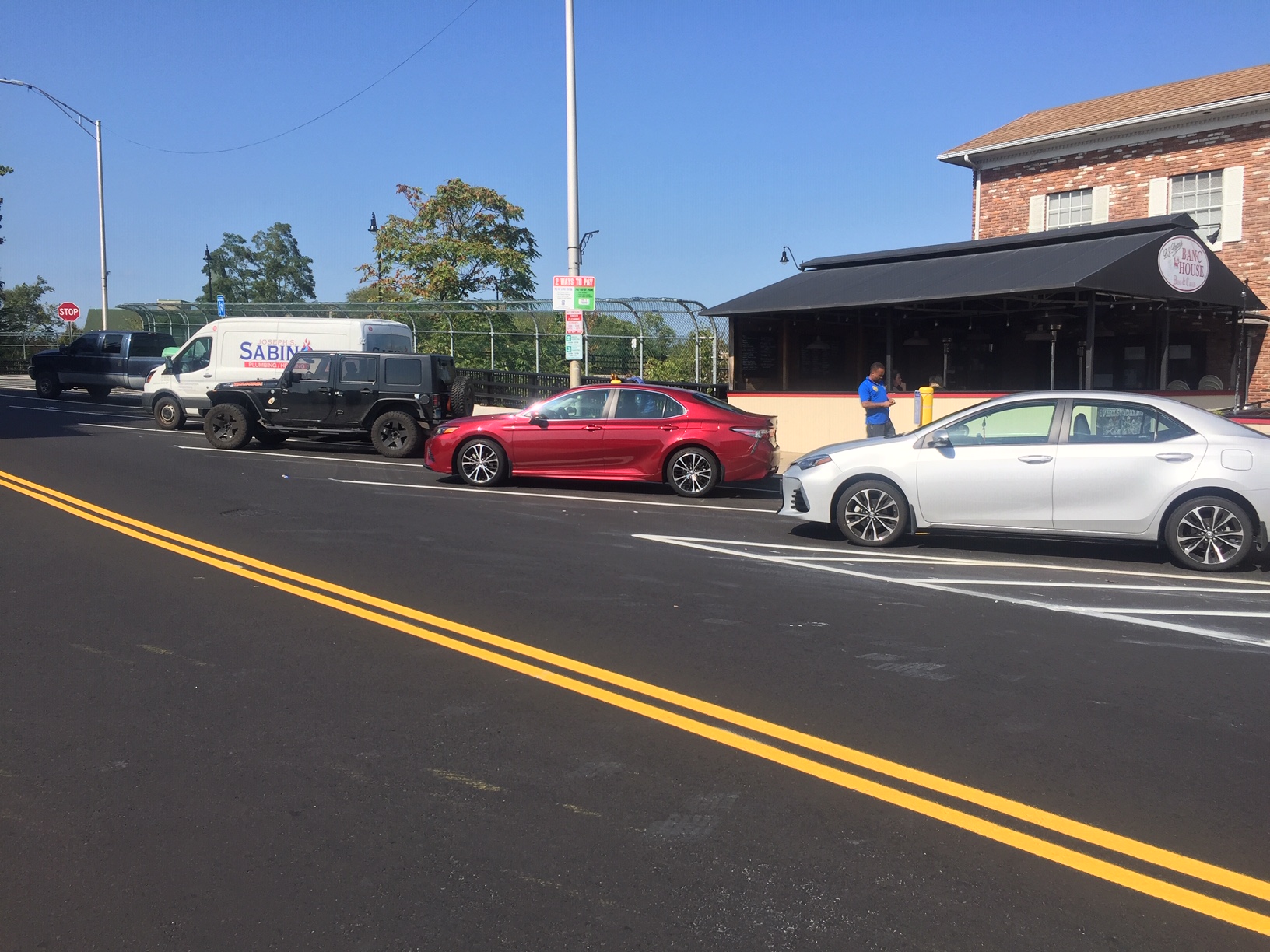 Back-in or reverse angled parking has become more and more popular over the last decade, especially among safety organizations like the National Highway Traffic SafetyAdministration, Insurance Institute for Highway Safety and AAA. This parking trend can be found throughout the United States from San Francisco, California, Tucson, Arizona, Missoula, Montana, Wilmington, Delaware, Syracuse, New York and now, Norwalk, Connecticut. Back-in angled parking is proven to be safer, a traffic calming measure, improves handicap parking and increases parking capacity.
Back-in or reverse angled parking has become more and more popular over the last decade, especially among safety organizations like the National Highway Traffic SafetyAdministration, Insurance Institute for Highway Safety and AAA. This parking trend can be found throughout the United States from San Francisco, California, Tucson, Arizona, Missoula, Montana, Wilmington, Delaware, Syracuse, New York and now, Norwalk, Connecticut. Back-in angled parking is proven to be safer, a traffic calming measure, improves handicap parking and increases parking capacity.
Benefits of Back-In Angled Parking
There are a lot of reasons why cities choose to move away from traditional parallel and towards the modern, back-in angled parking. As vehicles are modernized and advanced technology is incorporated into design, the challenges of unorthodox parking conventions become easier, simpler and safer. Parking Capacity: Angled parking provides more efficient use of space by creating 30%-40% more capacity versus parallel spaces. Traffic Calming: Angled parking requires more roadway, instead of curb space, thus decreasing travel lanes and shortening the width of the road, often making traffic move more slowly Safety: By reverse parking, you avoid backing out blindly into oncoming traffic or into the path of pedestrians. Back in angled parking also protects all of the passengers in the vehicle from the driver to the tiny, backseat passenger by protecting their exit and entrance out of the roadway. The National Highway Traffic Safety Administration (NHTSA) estimates that “267 people are killed and 15,000 injured each year by drivers not parking forward first, usually in driveways or parking lots.” Handicap Parking: Providing on-street handicap parking for parallel spaces is challenging with limited room for buffer zones to protect drivers and/or passengers. Back-in angled parking protects everyone and allows additional space for buffer zones at the beginning or end of each parking row. Cyclists: Back-in angled parking gives drivers an unobstructed view of motorists and cyclists resulting in increased awareness and decreased collisions due to line of sight issues.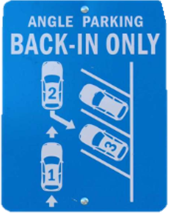 How to Park In Reverse-Angled Spaces
How to Park In Reverse-Angled Spaces
If you’ve never experienced back-in angled parking, no worries, it’s simple. While the maneuvers are not much different than those required for parallel parking, many people say it’s actually easier. You just drive slightly past the space, signal, and then back into the space. View the video below to see how it works.
Artistic Crosswalks
 You may have seen them in your city or town, brightly colored crosswalks, perhaps with an artistic design. If they’ve caught your eye, well… that’s the point! Artistic crosswalks are a playful, cost-efficient, and low-maintenance tool to highlight marked pedestrian crossings. They attract attention, while creating a sense of community.
You may have seen them in your city or town, brightly colored crosswalks, perhaps with an artistic design. If they’ve caught your eye, well… that’s the point! Artistic crosswalks are a playful, cost-efficient, and low-maintenance tool to highlight marked pedestrian crossings. They attract attention, while creating a sense of community.
What Are Artistic Crosswalks?
Artistic crosswalks are exactly as the term implies, crosswalks that are not your run-of-the-mill white lines, but include color, patterns, and even textures. They can be designed to reflect the special character of a neighborhood, mark the gateway to a district, or create local identity and pride.Pros and Cons of Artistic Crosswalks
In addition to promoting art and being fun, these crosswalks raise awareness of pedestrian safety. They are more noticeable to pedestrians and drivers, often having the side effect of slowing down traffic in the area. Some proponents also say artistic crosswalks offer public health benefits making roads more pedestrian-friendly. By creating more welcoming spaces, they encourage people to get out and walk or bike. Critics offer caution, however, saying that the artwork can be distracting or confusing to motorists. In fact, federal guidelines for crosswalks are very specific, with exact specifications for white line size and spacing, even the type of reflective paint to be used. Some cities have removed colorful crosswalks after the Federal Highway Administration deemed them distracting to drivers.Norwalk, CT and Artistic Crosswalks
The City of Norwalk has a relatively new artistic crosswalk program developed by the Transportation, Mobility and Parking Department with stated guidelines. The city recently approved one at West Avenue and Connecticut Avenue in front of Mathews Park that will be painted in rainbow colors. The idea was proposed by the Triangle Community Center. The crosswalk not only represents the LGBTQ community but also Norwalk’s diversity and inclusivity as it is located across from Heritage Wall which celebrates Norwalk’s diversity, representing the gateway to Norwalk. Norwalk’s Artistic Crosswalk program ties into the efforts of the Citywide Plan by creating neighborhood identity and placemaking as part of the investment into economic and community development. This installation was a true community collaboration, bringing together the City, The Triangle Community Center, the Norwalk Green Association, the Norwalk Bike Walk Commission, the Norwalk Historical Commission and the Norwalk Historical Society. If you or your organization would like to propose one for Norwalk, Click Here for more information.City Parking Trends
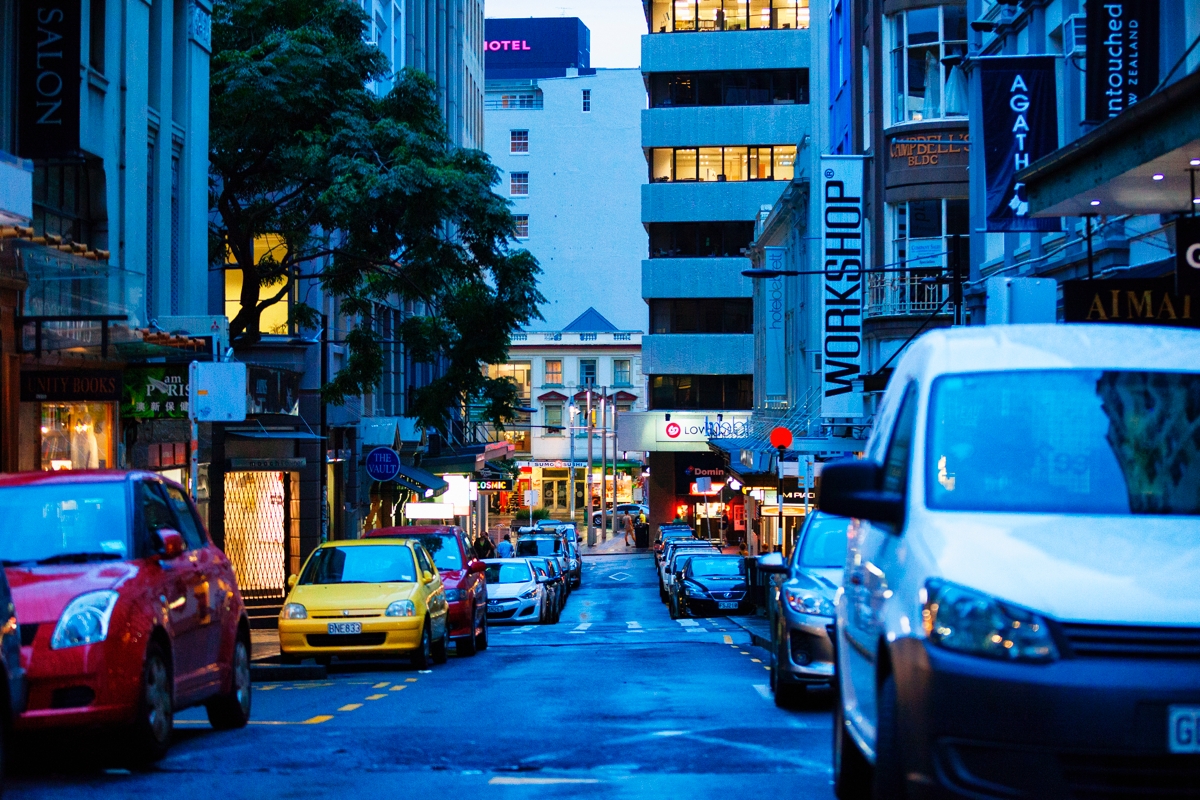 City parking. Some look at it as a necessary evil. Others as a godsend in a congested city. Either way, paid parking is here to stay and playing an ever-more important role as more and more people move into cities (also a recent trend). In fact, parking is now looked at by cities as part of the broader movement to ease traffic congestion and create more livable, walkable communities. There are a number of ways that parking has changed since the days of meter maids and coin-operated machine. Below are a few parking trends that we are seeing now that will continue in the future:
City parking. Some look at it as a necessary evil. Others as a godsend in a congested city. Either way, paid parking is here to stay and playing an ever-more important role as more and more people move into cities (also a recent trend). In fact, parking is now looked at by cities as part of the broader movement to ease traffic congestion and create more livable, walkable communities. There are a number of ways that parking has changed since the days of meter maids and coin-operated machine. Below are a few parking trends that we are seeing now that will continue in the future:
Parking Goes Digital: It’s All About The Technology
As in all aspects of modern life, parking has moved into the digital realm. Let’s review two of the ways that parking customers are now interacting with parking in the digital space.Payments Via Apps
The days of making sure you had change, in case you needed to feed the meter at the urban center, have gone by the wayside. Today, the parking industry is moving rapidly from cash to e-payments. Credit card payments and especially online payments through mobile phones are more and more common and are quickly become the norm.Finding Spaces: Way-finding Technologies
With GPS, cloud software, and mobile phones, municipalities are installing sensor space monitoring systems to allow parking customers to easily find open spaces on the street and in lots. These sensors give real-time data to drivers via smartphone apps, and in some cases through their vehicles, not only letting them know if spaces are available but showing them how to get there so they don’t waste time driving around. This helps out the driver but also the city, ensuring smoother traffic flows and reducing congestion. The future of parking is mobile with apps that provide real-time information on availability and guidance, and allow easy online payment. These technologies are beneficial to customers, making their parking experience seamless and hassle-free. They also help the parking industry’s next trend, making parking more environmentally friendly by reducing drive time looking for parking, which decreases fuel consumption and emissions.Energy Efficiency And Sustainable Solutions
Apps are one way parking is changing for customers, and helping the environment at the same time. But there are other, perhaps not as obvious, ways that parking is becoming more green. Parking facilities are striving for more energy efficiency by installing motion detection sensors and timers for lights, energy-efficient LED lighting, and solar powered meters and pay stations. These updates are not only better for the environment; they also save costs in long term use. In addition, the parking industry is encouraging greener, alternative modes of transportation. Electric car charging stations as well as special access and parking spaces for hybrids and electric vehicles are now common in parking lots. In addition, and perhaps counterintuitively, municipal parking facilities are adding areas for bicycle parking.Providing Alternatives To Driving Alone
The way we get around cities has changed drastically in the last few years with the need to drive your own car becoming less desirable. We’ve seen a rise in popularity of ride-sharing/on demand companies such as Uber and Lyft and an ever-increasing emphasis on the environment with cities providing more bike lanes and promoting mass-transit systems. Parking is now seen as more interconnected to all of these alternative transportation methods. Jumping on these trends, the parking industry itself is beginning to coordinate and operate car-sharing services and shuttles. We expect to continue to see the above trends in cities as the parking industry is seen more and more as a critical part a city’s economic development success. Parking is interconnected with transportation and mobility, impacting not only a city’s economy but also its liveability. Here in Norwalk, the Norwalk Parking Authority has already put in place many of the trends above. You can now drive to the urban areas of Norwalk such as SoNo or Wall Street and find available parking and make payments via mobile apps. Energy efficient lighting, car charging stations and bike parking areas are available in the South Norwalk Railroad Station, the Maritime Garage and other municipal lots. In addition, the Norwalk Transit District has just rolled out a pilot ride-sharing/on demand service called Wheels2U.Going Somewhere? Check Out These Different Methods Of Transportation
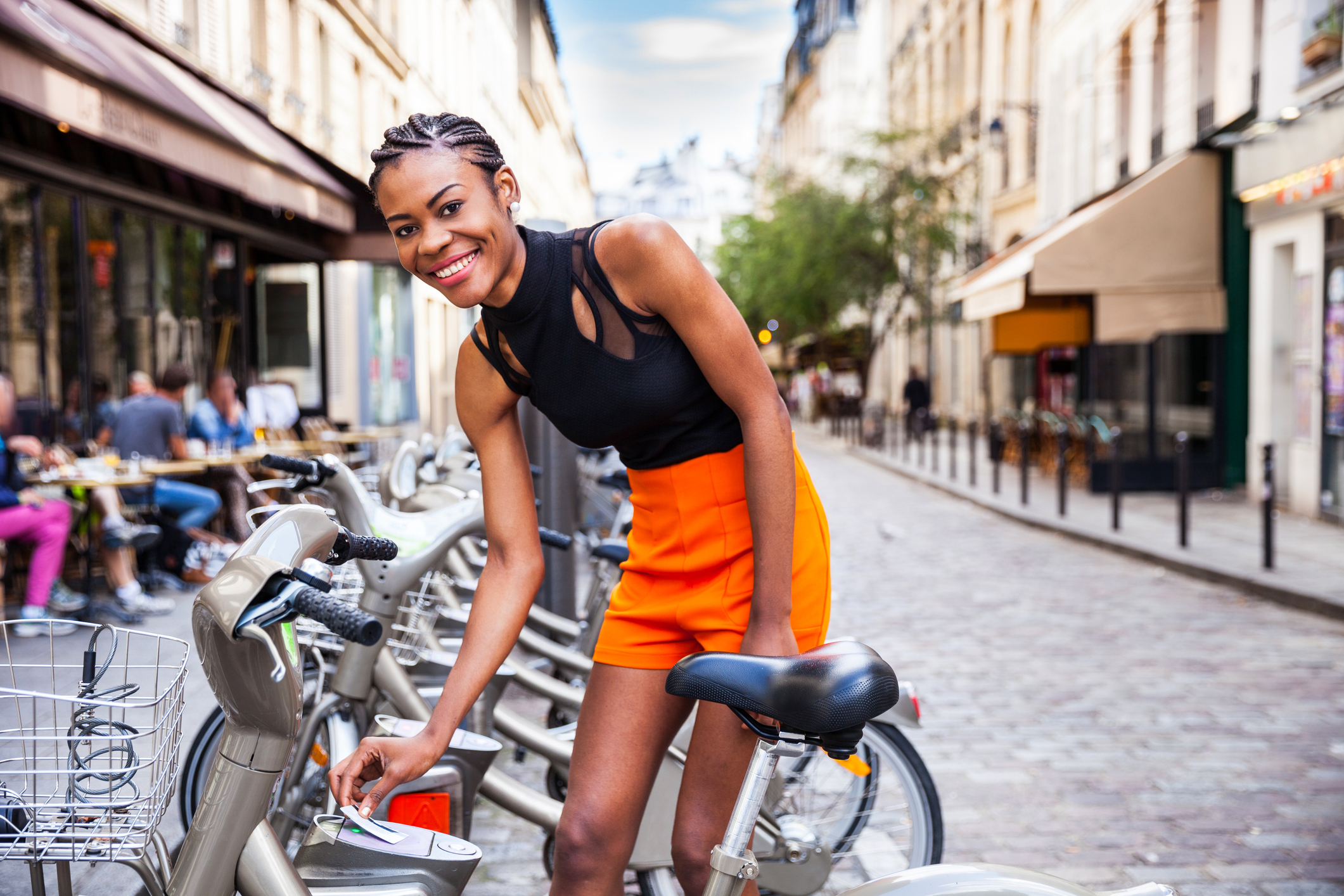 As city streets become more congested, and people more environmentally conscious, city dwellers are resorting to alternative ways to get around. Public transportation such as subways and buses will always be a critical part of this, but other, newer, modes of transportation are beginning to take off. Below are a few of the methods people are using to move from place to place in cities.
As city streets become more congested, and people more environmentally conscious, city dwellers are resorting to alternative ways to get around. Public transportation such as subways and buses will always be a critical part of this, but other, newer, modes of transportation are beginning to take off. Below are a few of the methods people are using to move from place to place in cities.




